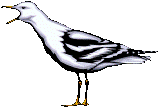Eastern Wildlife Damage Control Conferences

Eastern Wildlife Damage Control Conference: 2nd (1985)
Date of this Version
September 1985
Document Type
Article
Abstract
The meadow vole (Microtus pennsylvanicus) and pine vole (M. pinetorum) are major pests in fruit orchards in the eastern U.S. These species damage trees by gnawing the bark or root systems during the winter months, thus, reducing the fruit yields or in many cases actually killing the trees. Orchard owners generally use an integrated pest management approach involving a combination of methods: (1) cultural practices such as reducing favorable vole habitat, thereby, limiting the carrying capacity, (2) mechanical control through the use of tree guards or trapping techniques, and (3) the use of rodenticides, both acute and chronic. Economics, or affordability, is often the determining factor as to which method or methods an orchard manager will utilize to reduce vole damage to trees. Although rodenticides offer an effective means of control, the use of chemicals should be in combination with either cultural or mechanical control measures. Environmental considerations are of utmost importance in the chemical control of voles. Both primary and secondary hazard potential to non-target wildlife should be examined before a product is used. The rapid environmental degradation time of certain compounds reduces exposure to wildlife.

